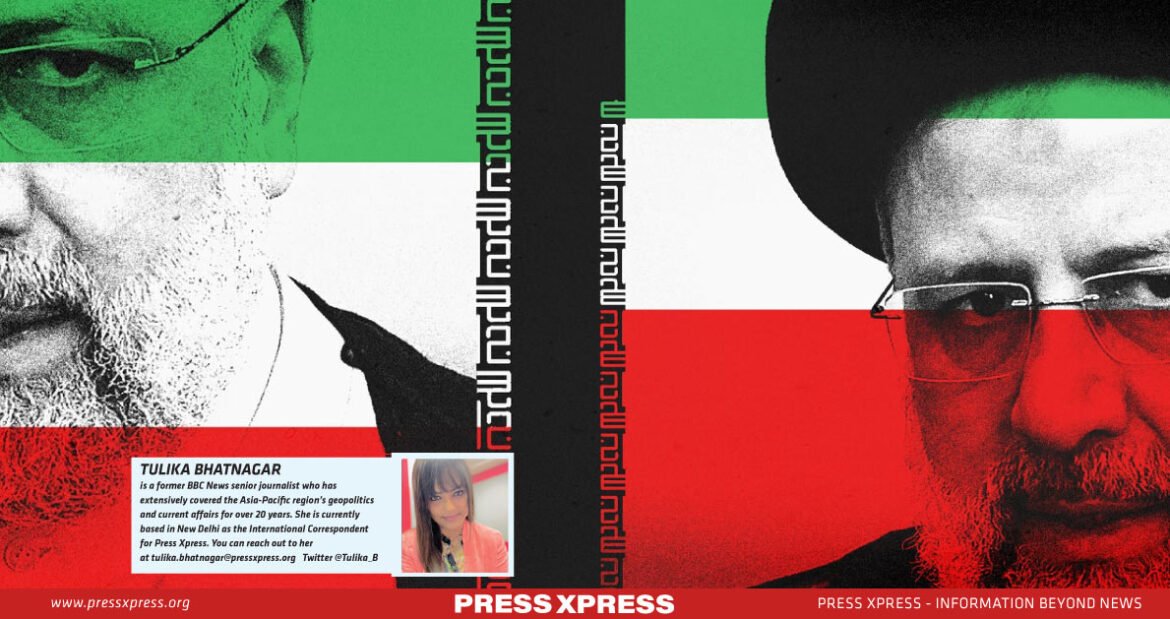More than 10 days after the death of Iran’s President Ebrahim Raisi in a helicopter crash, new and conflicting details continue to emerge, leaving the incident shrouded in mystery.
On 19 May, a helicopter carrying Raisi with seven other officials crashed in the Iranian province of East Azerbaijan.
You Can Also Read: Iran Opens Race for New President After Raisi’s Death
Accompanying Raisi were high-ranking officials including Iran’s foreign minister Hossein Amir-Abdollahian; East Azerbaijan province governor Malek Rahmati; and senior Shia cleric Ayatollah Mohammad Ali Al-e Hashem, who was also Supreme Leader Ali Khamenei’s official representative in East Azerbaijan.
Also present was Brig-Gen Mohammad Mehdi Mousavi of Iran’s elite force IRGC (Islamic Revolutionary Guard Corps), the head of the president’s security team. Along with him, there were pilots Col Mohsen Daryanush and Col Seyyed Taher Mostafavi, and technician Maj Behrouz Qadimi.
They were all declared dead on 20 May.
On 24 and 30 May, the first and second formal reports released by Iran’s General Staff of the Armed Forces rule out the possibility of foul play. However, they do not state the main reason for the crash.
The reports mention that “some actions need more time to express a definite opinion”.
Missing bodyguard
There is chatter among the intelligence community about how the president’s bodyguard was notably absent from the ill-fated helicopter.
Initial reports had actually said that there were nine passengers on board, including two bodyguards. But after the wreckage was found, the number of bodies was eight.
Few days later, the mystery of the second bodyguard, Javad Mehrabi, came to light when he was seen attending the president’s funeral ceremony, leaning miserably in a corner and later speaking quietly to some other officials attending the service.
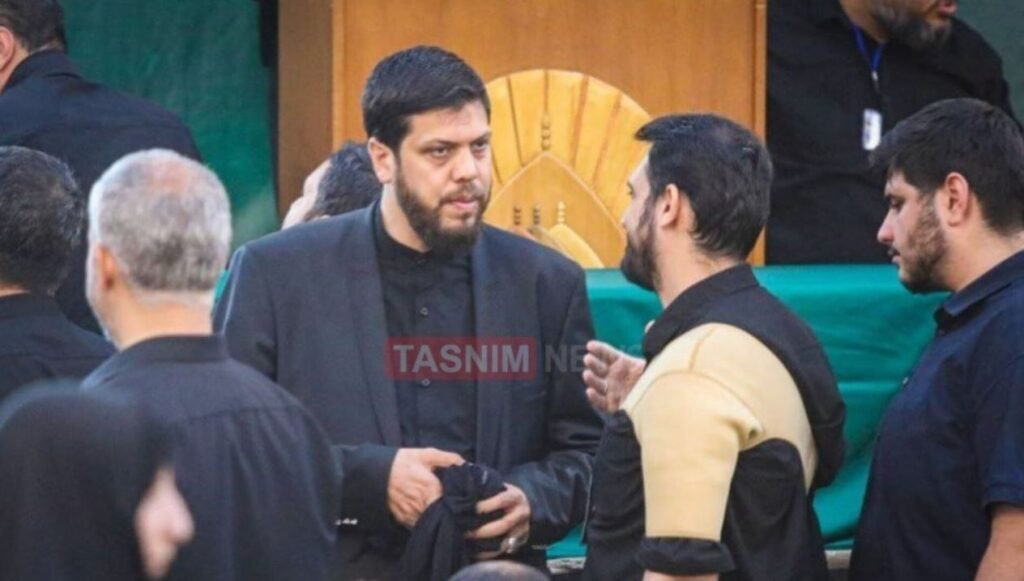
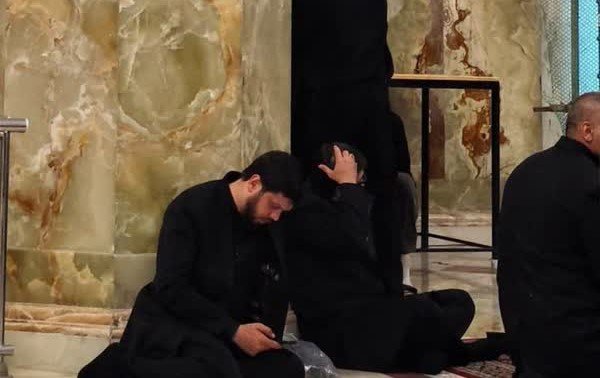
What is notable here is that Mehrabi belongs to the IRGC’s special protection unit, called the Sepah Ansar al-Mahdi, responsible for the safety of high-ranking officials inside and outside the country. This unit was established on Ayatollah Khomeini’s order in 1979 and is “responsible for protecting the life and guaranteeing the safety of the prominent figures of the regime, even if (they) themselves refuse it.”
Mehrabi’s name and photo were initially listed among the nine people killed in the helicopter crash. According to the Azerbaijani-language Gunaz television channel, it is also questionable that the first videos and photos taken from a distance of the crashed helicopter showed a person at the crash site. However, this fact remains unverified.
Mehrabi was traveling in one of the other two helicopters that landed safely – but it is still to be established whether or not it was a last-minute switch.
“A last-minute switch like that happens in the rarest of rare circumstances,” said a senior officer, who formerly served with India’s elite SPG (Special Protection Group) force.
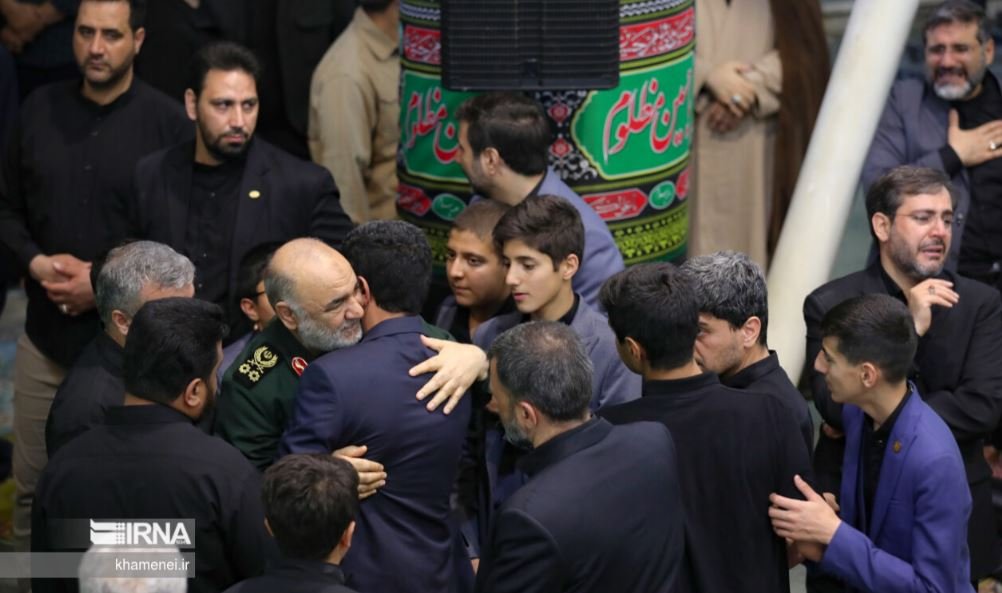
The SPG is responsible for providing proximate security to the Prime Minister of India, the former PM, and their immediate family members. The force discusses and plans every minute detail of the leader’s travel schedule and follows a strict, confidential protocol.
Therefore, “unless there was a critical reason”, a presidential bodyguard wouldn’t be asked to switch helicopters.
“Another plausible reason is when a top-level leader needs to be accommodated at the last minute for say, an important discussion during the flight, in which case the least priority occupant could be asked to vacate if there is limited seating capacity,” the officer explained, on condition of anonymity.
In terms of seating capacity, however, the Bell 212 helicopter carrying President Raisi can accommodate 15 passengers but only had 8 on board. In fact, recent images of Raisi show Mehrabi almost always by his side. The question therefore arises: why did the president’s personal bodyguard continue the journey in a different helicopter?
“It could be possible – and this is something that Iranian authorities are also saying – that some high-level passengers were reassigned to another helicopter at the last minute before the flight. However, one’s gut feeling does question why a well-trained personal security officer who could have been the most probable help to save the president, was removed from the scene beforehand,” the ex-SPG officer told this reporter.
The other bodyguard present in the fatal crash was Brigadier General Seyyed Mehdi Mousavi, who headed the late president’s security detail.
Mousavi’s father recounted a strange narrative to Iranian state television a few days after the crash.
He spoke about how the late Brig-Gen Mousavi visited his parents, in what was to be their last meeting before the fatal crash.
Speaking on camera, Mousavi’s father, visibly emotional, said, “That night, he came home. He said ‘khuda hafiz’ (goodbye) and left. He took out his car from the parking, but left it in the open street and returned. He sat down again for almost 20 minutes to half-an-hour.”
Looking disturbed, he continued the heartbreaking account: “He left again. He went ahead. Then, returned again. He sat for 10 minutes and then left. Then, he returned for a third time.”
“This time, he hugged his mother and kissed her feet. He hugged me and bent down.”
“I knew in that moment, that he will not return from this trip. We will never see each other again. It was obvious from his behaviour,” the father said, choking as he spoke.
What happened on 19 May?
An account by Raisi’s chief of staff, Gholamhossein Ismaili, who was also a member of the president’s entourage, seems to have raised more questions.
Ismaili was the passenger of helicopter number 3 in the flight operation that day.
According to Ismaili, in the early hours of 19 May, Iran’s President Ebrahim Raisi embarked on a journey by airplane, accompanied by his entourage, from Tehran to Tabriz, located in the East Azerbaijan province of northwestern Iran.
From Tabriz, three helicopters were used for a project visit to Agh Band.
The second leg of the journey was from Agh Band to Khoda Afarin, near the Giz Galasi Dam, with further travel plans.
At around 1 pm local time, the final leg of the journey was from Khoda Afarin towards Tabriz, but the helicopter crash prevented the completion of the journey.
Ismaili said: “After half an hour along the route, in the area adjacent to the Songun copper mine – before we reach this area, in the valley adjacent to the area where this route was chosen, there is a patch of cloud, like a table spread in the desert.”
“There was no fog on our helicopter route… it may have been foggy in the lower reaches of the valley.”
The head of the president’s office continued: “In terms of flight altitude, the other helicopters were facing this cloud and we were a little lower than the clouds.”
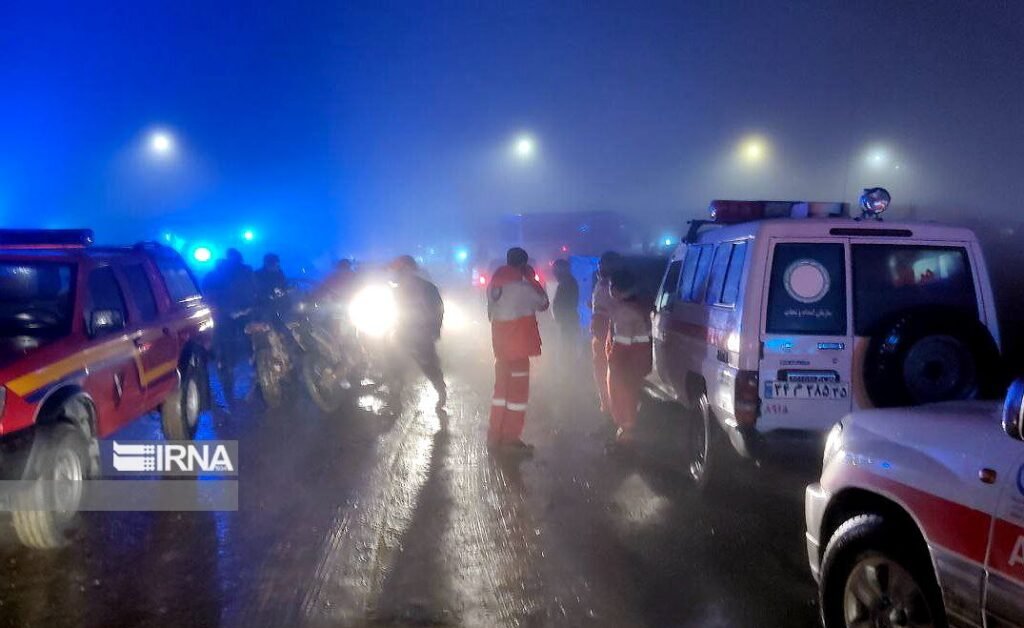
Late Captain Mustafavi, who was the commander of the pilots and also the pilot of the helicopter carrying Raisi, told them to “gain altitude and go above the clouds and continue the route from there.”
“Thirty seconds after we went above the cloud, our pilot realized that the main helicopter was not with us anymore,” Ismaili added.
Ismaili’s narrative gains significance in that it roughly determines the location of the incident. Thirty seconds after gaining altitude above the cloud, the president’s helicopter went missing.
There was no severe weather forecast from the meteorological department.
Ismaili’s account also highlights the crucial point that the “weather was favourable, with no issues”. He actually stated that they “emerged from the cloud layer very normally, even without any turbulence.”
“When our pilot turned around, I asked the co-pilot, why did you turn around?”
Ismaili recalled the pilot replying that the main helicopter hadn’t followed them, and it was then that “we assumed that it had had an emergency landing… no matter how much we called, our radio communication was cut off.”
Why wasn’t there any May Day call as is the standard procedure in such scenarios, asked the ex-SPG officer from India. “Was there no time for it? Was there a sudden hard landing?”
Ismaili also spoke about landing in the Songun copper mine area. The wreckage of the helicopter was found 3km northeast of the Tawal area, which is around 12km away (direct distance), and 30km through land route.
The first two official probe reports by the General Staff of the Armed Forces ruled out foul play saying “no suspicious issues were observed in the communications between the control tower and the flight crew.”
However, questions remain unanswered about the suddenness of the entire incident.
Confusion in timing and signals post-crash
The helicopter that crashed did not have a transponder fitted or had it turned off, according to Turkish transport minister, Abdulkadir Uraloglu. Turkey had checked for a signal from the helicopter’s transponder that broadcasts height and location information upon hearing the news that it had crashed since Iran falls within Turkey’s area of responsibility for emergency response.
However, the transponder could have been switched off as a matter of routine, to avoid any tracking by hostile governments.
Issa Zarepour, the Iranian Minister of Information and Communications Technology, said in an official statement that two mobile phones remained switched on for a few hours after the crash. “This allowed us to identify a more precise area to locate the wreckage.”
But the mystery continues over the timing of the incident (around 1.30 pm local time) in a remote, mountainous area – and the time it was first reported – not until after 4 pm local time.
Iran’s Vice President for Executive Affairs Mohsen Mansouri had also said that communication was established with two survivors on the president’s helicopter – a flight crew member and one other unnamed individual, indicating that the severity of the incident may not have been very high initially. “Two of the individuals inside the helicopter managed to communicate with our team multiple times,” he said, without providing further details.
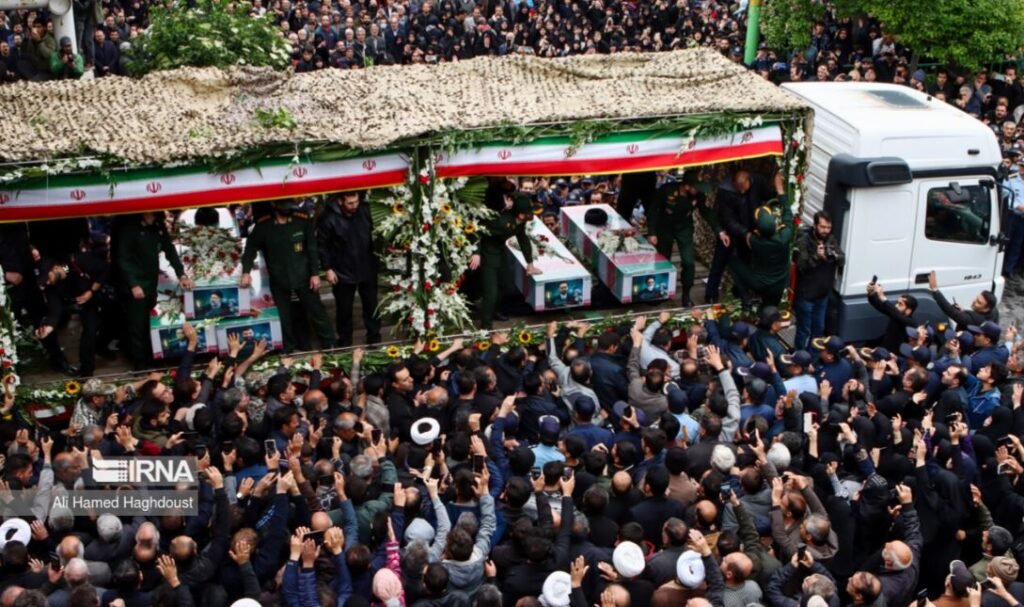
Despite two helicopters reporting favourable weather and managing safe landings, two survivors talking to officials post the crash, and a mobile signal present for up to three hours after the crash, it took 16 hours for rescuers to reach the crash site.
Ismaili’s account also sheds light on his communication with cleric Mohammad Ali Al-Hashem, a passenger aboard the helicopter, post-crash.
Ismaili narrated that he attempted to contact the pilot, but Al-Hashem answered the phone instead. Despite having been in touch with Al-Hashem for 3-4 hours after the crash, Ismaili only revealed that he responded with “I do not understand what has happened”.
Al-Hashem was also found dead when rescue teams arrived, although reports said his body was not burned like that of Raisi and others.
“We cannot rule out sabotage,” said an intelligence official working with a central intelligence agency in India. “Sophisticated technology can be at play, for example, a small chip could have been easily employed that leads to overheating and burning of a helicopter,” the officer, who wishes to remain unnamed, told this reporter.
“Moreover, due to the hostile escalations in the region, intelligence communities are alert about the possibility of remote-controlled or altitude-triggered explosives.”
All said and done, the mystery lingers and many feel there is enough evidence of a plot.

Simplifying conspiracy theories
On the other hand, many experts also point out that such possibilities are laid to rest for now after Iran ruled out sabotage in its two probe reports.
Outdated tech could have been a simple factor that led to the mishap.
Iran’s former foreign minister, Mohammad Javad Zarif, has blamed the US sanctions on Iran’s aviation as a main possible factor for the crash.
“Technical issues can also happen if the helicopter is not maintained as per standards and spares are not replaced,” believes an aviation expert from India, Dinesh Menon, who runs a drone manufacturing unit and also has a background in intelligence investigations.
“In this case, the other two helicopters could simply have been lucky in this situation. For example, a few years ago in India, a well-maintained helicopter ferrying the Chief of Staff of the Army (CDS Bipin Rawat) crashed in Ooty in India. The pilot lost visibility,” Menon explains.
However, since 2000, there have been at least 20 deadly crashes in Iran killing more than 1,700 people – only 8 of them were US-made planes (9 Russian and 3 European). The chopper that crashed was a US-made Bell 212, a nearly 50-year-old chopper, built to fly in visual flight conditions.
If not technical glitches, one must certainly not overlook the fact that it is “internal failures in Iran’s intelligence,” Menon says. “The best thing is to blame someone else,” he adds, pointing to initial speculations about the possibility of a foreign role in the crash.
Could the target have also been the IRGC? “Could be,” says Menon.
As far-fetched as that sounds, Iran’s IRGC has already lost 18 members, including prominent military leaders, who have been killed in just four months after the Palestine crisis began in October last year – between 2 December 2023 to 2 April 2024.
“Also, one mustn’t forget how in 2017, Iran’s former president Akbar Hashemi Rafsanjani was found dead in a swimming pool… his body reportedly had radioactive readings many times higher than safe levels, but a family request for autopsy was denied and the case was closed,” the intelligence official told this reporter.
Could Israel therefore have had any role – or previous knowledge – of Raisi’s death? Israeli officials have denied and the idea has been completely rejected by Israeli analysts, but the thought of its possibility of a political assassination remains.
Is it really that unprecedented in a regime known both for its opacity and for having seen similar incidents in the past?
While Iran deals with the political aftermath, a snap election on 28 June is being held to elect its next president – polls were originally scheduled for 2025. The vote will be held during a turbulent time – the Israel-Palestine war rages on and diplomatic tensions continue over Iran’s nuclear programme.
Meanwhile, Raisi’s death continues to linger in the minds of many, even as his elderly mother is seen mourning in an online video, calling out for the death of “anyone other than God who killed you (my son, Raisi)”.

